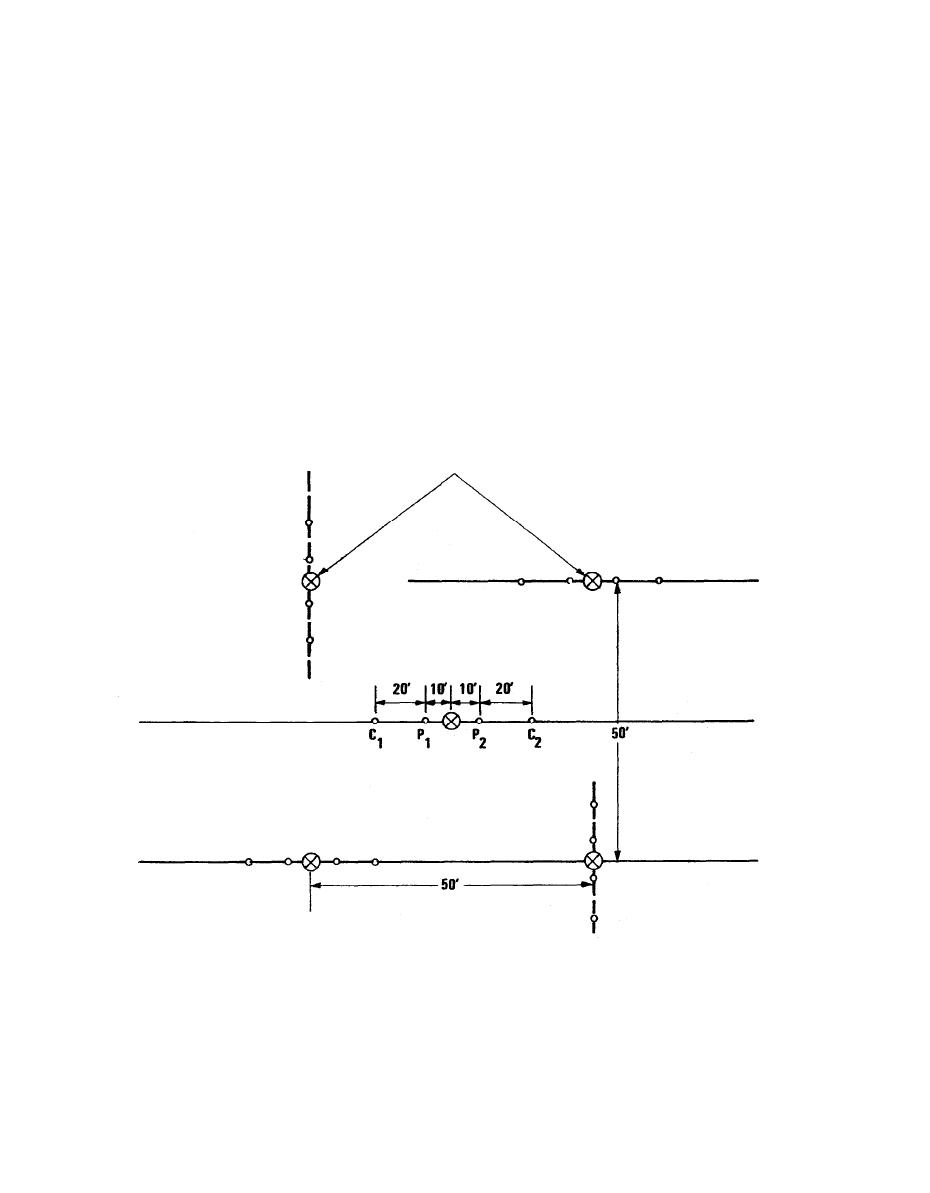

Custom Search
|
|

|
||
 MIL-HDBK-419A
The reading obtained indicates the average resistivity of the soil in the immediate vicinity of the
b.
test area. A resistivity profile of the site requires that the above procedure be repeated at many sample
locations over the region being mapped. For small sites up to 2500 square feet (232 square meters), make at
least one measurement at the center of the site and at each of the four corners of a 50-foot square as shown in
Figure l-2. Drive a stake or marker at the locations shown. Position the potential and current probes in a
straight line with the stake or marker centered between the probes. Make a resistance measurement at each
location and calculate the resistivity as in step a-4 above. Take the average of the five readings as the
resistivity for the soil at the site. If possible, soil measurements should be made during average/normal
weather conditions. Measurements should never be made immediately after a rain or storm.
c.
For larger sites, make measurements every 100 to 150 feet (30 to 45 meters) over the site area.
Include in the site area the locations of support elements such as transformer banks, towers, engine-generator
buildings, etc. Choose a sufficient number of test points to give an indication of the relative uniformity of the
soil composition throughout the area. Be particularly alert for the presence of localized areas of very high or
very low resistivity soils.
STAKES OR
MARKERS
NOTE: NOT DRAWN TO SCALE.
Figure 1-2. Resistivity Determination of a Small Site
1-4
|
 |
|
 |
||